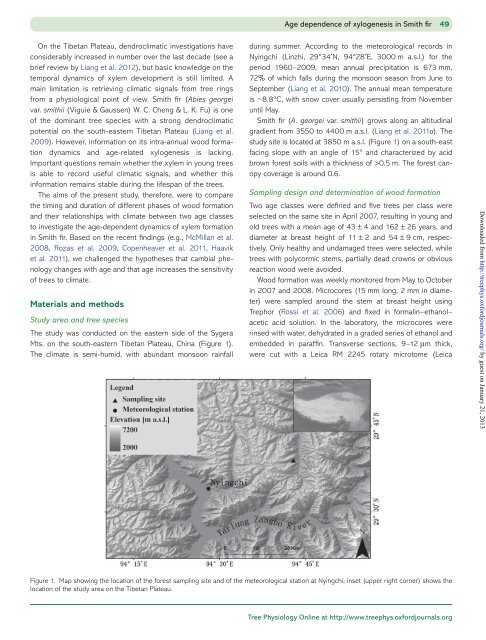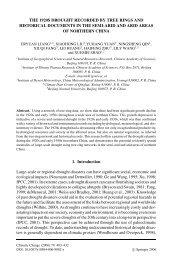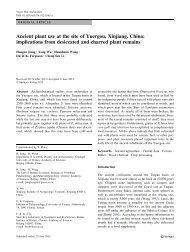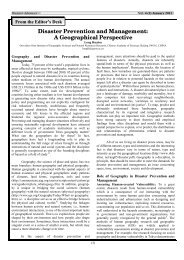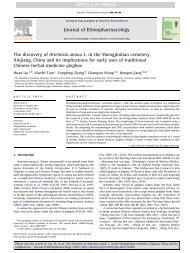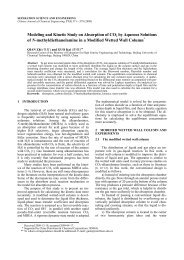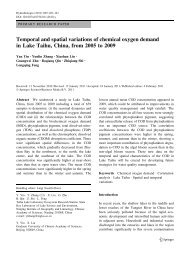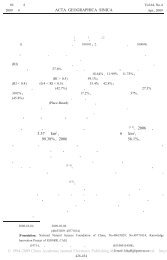AN INTERNATIONAL BOTANICAL JOURNAL
AN INTERNATIONAL BOTANICAL JOURNAL
AN INTERNATIONAL BOTANICAL JOURNAL
Create successful ePaper yourself
Turn your PDF publications into a flip-book with our unique Google optimized e-Paper software.
Age dependence of xylogenesis in Smith fir 49<br />
On the Tibetan Plateau, dendroclimatic investigations have<br />
considerably increased in number over the last decade (see a<br />
brief review by Liang et al. 2012), but basic knowledge on the<br />
temporal dynamics of xylem development is still limited. A<br />
main limitation is retrieving climatic signals from tree rings<br />
from a physiological point of view. Smith fir (Abies georgei<br />
var. smithii (Viguie & Gaussen) W. C. Cheng & L. K. Fu) is one<br />
of the dominant tree species with a strong dendroclimatic<br />
potential on the south-eastern Tibetan Plateau (Liang et al.<br />
2009). However, information on its intra-annual wood formation<br />
dynamics and age-related xylogenesis is lacking.<br />
Important questions remain whether the xylem in young trees<br />
is able to record useful climatic signals, and whether this<br />
information remains stable during the lifespan of the trees.<br />
The aims of the present study, therefore, were to compare<br />
the timing and duration of different phases of wood formation<br />
and their relationships with climate between two age classes<br />
to investigate the age-dependent dynamics of xylem formation<br />
in Smith fir. Based on the recent findings (e.g., McMillan et al.<br />
2008, Rozas et al. 2009, Copenheaver et al. 2011, Haavik<br />
et al. 2011), we challenged the hypotheses that cambial phenology<br />
changes with age and that age increases the sensitivity<br />
of trees to climate.<br />
Materials and methods<br />
Study area and tree species<br />
The study was conducted on the eastern side of the Sygera<br />
Mts. on the south-eastern Tibetan Plateau, China (Figure 1).<br />
The climate is semi-humid, with abundant monsoon rainfall<br />
during summer. According to the meteorological records in<br />
Nyingchi (Linzhi, 29°34′N, 94°28′E, 3000 m a.s.l.) for the<br />
period 1960–2009, mean annual precipitation is 673 mm,<br />
72% of which falls during the monsoon season from June to<br />
September (Liang et al. 2010). The annual mean temperature<br />
is ~8.8°C, with snow cover usually persisting from November<br />
until May.<br />
Smith fir (A. georgei var. smithii) grows along an altitudinal<br />
gradient from 3550 to 4400 m a.s.l. (Liang et al. 2011a). The<br />
study site is located at 3850 m a.s.l. (Figure 1) on a south-east<br />
facing slope with an angle of 15° and characterized by acid<br />
brown forest soils with a thickness of >0.5 m. The forest canopy<br />
coverage is around 0.6.<br />
Sampling design and determination of wood formation<br />
Two age classes were defined and five trees per class were<br />
selected on the same site in April 2007, resulting in young and<br />
old trees with a mean age of 43 ± 4 and 162 ± 26 years, and<br />
diameter at breast height of 11 ± 2 and 54 ± 9 cm, respectively.<br />
Only healthy and undamaged trees were selected, while<br />
trees with polycormic stems, partially dead crowns or obvious<br />
reaction wood were avoided.<br />
Wood formation was weekly monitored from May to October<br />
in 2007 and 2008. Microcores (15 mm long, 2 mm in diameter)<br />
were sampled around the stem at breast height using<br />
Trephor (Rossi et al. 2006) and fixed in formalin–ethanol–<br />
acetic acid solution. In the laboratory, the microcores were<br />
rinsed with water, dehydrated in a graded series of ethanol and<br />
embedded in paraffin. Transverse sections, 9–12 µm thick,<br />
were cut with a Leica RM 2245 rotary microtome (Leica<br />
Downloaded from http://treephys.oxfordjournals.org/ by guest on January 21, 2013<br />
Figure 1. Map showing the location of the forest sampling site and of the meteorological station at Nyingchi; inset (upper right corner) shows the<br />
location of the study area on the Tibetan Plateau.<br />
Tree Physiology Online at http://www.treephys.oxfordjournals.org


